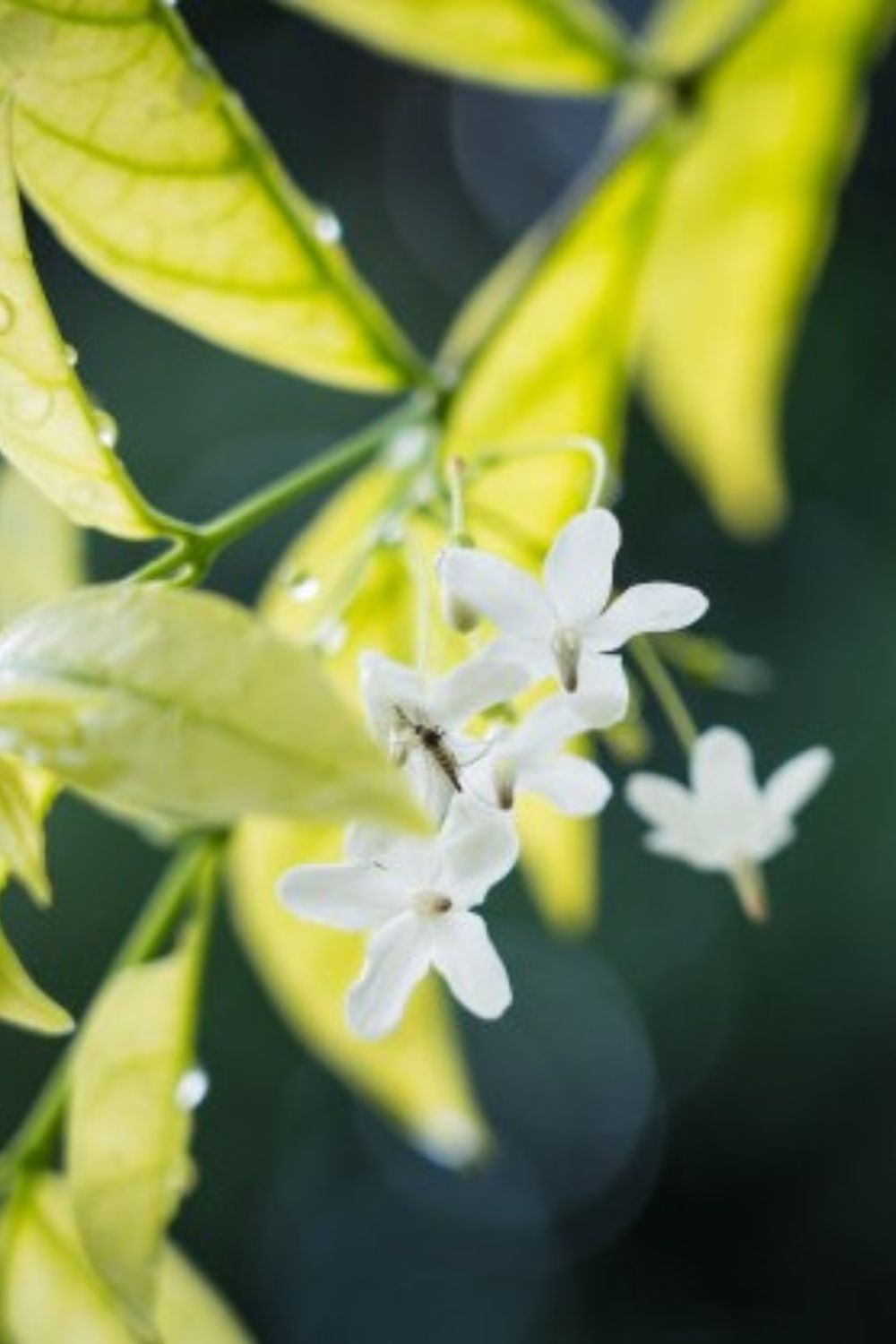Flax lily is not a true lily (Liliaceae family). It is a perennial flower in the Asphodelaceae family, which makes it a relative of the famous asphodel flower of the Mediterranean region. The plant likes shade, is not bothered by deer pests, and requires little maintenance, making it an ideal perennial for people “on the go” who want to come home to a colorful garden. Best of all, flax lily furnishes landscape color across multiple seasons, first with its foliage, then with its flowers, and, finally, with its berries.
| Botanical Names | Dianella tasmanica |
| Common Names | Flax lily, Tasman flax lily |
| Plant Type | Flowering perennial |
| Mature Size | 1.5 to 2 feet tall and 2.5 to 3 feet wide |
| Sun Exposure | Partial shade to full shade |
| Soil Type | Average to low water needs; well-drained |
| Soil pH | Acidic to neutral |
| Bloom Time | February to April in its native land |
| Flower Color | Blue, white; flowers of the closely-related D. ensifolia can be light pink |
| Hardiness Zones | 9 to 11 (USDA) |
| Native Areas | Tasmania and southeastern Australia |
How to Grow Flax Lily
The one drawback with flax lily is that it is a tender plant, suited to zones 9 to 11. Within those zones, flax lily is easy to grow because of its tolerances:
- It tolerates deer pests, which tend not to eat it.
- It also tolerates drought.
This perennial spreads via underground rhizomes, but it does so only over a long period of time. If you can’t wait that long, you can propagate flax lily by dividing its clumps, instead.
Flax lily is susceptible to diseases such as leaf spot and powdery mildew, but you can lower the chances of such infestations through generous spacing, by avoiding overhead watering, and by watering in the morning (so that the soil has a chance to dry before night falls).
Light
Grow flax lily in full shade if you live in a region with very hot, dry summers and in partial shade if you landscape in an area with milder summers.
Soil
The main requirement for the soil of flax lily is that it should drain sharply.
Water
Flax lily tolerates drought well once it is mature.
Fertilizer
Feed flax lily in spring (prior to the appearance of new growth) with the same kind of fertilizer (suited to acid-loving plants) that you would use for azaleas.
Landscape Uses for Flax Lily
Flax lily has rigid, blade-shaped leaves, rather like Adam’s needle (Yucca filamentosa). The leaves can reach 3 feet long. The bold foliage contrasts well with softer-looking plants. The foliage is evergreen in zone 11.
The flowers bloom in panicles on stalks that jut up over the foliage. The individual blooms are small (1/2 inch to 3/4 inch across) but numerous enough to put on a show. They are usually blue (with striking yellow stamens) but occasionally white. The flowers are succeeded by shiny, blue berries. The rich color of the flowers and of the berries is welcome in the shade garden. Flax lily is particularly useful under trees: Dry shade poses challenges that not just any shade plant can overcome.
Flax lilies work well in containers. Pot up several of them and install them on shaded areas of decks and patios to inject visual interest there.
Varieties of Flax Lily
Variety in the world of flax lilies comes mainly in the form of cultivars with variegated foliage:
- ‘Variegata’ has green leaves with white margins.
- ‘Silver Streak,’ likewise, sports white leaf edges.
- ‘Yellow Stripe’ is more interesting. On its foliage, light green, dark green, white, and yellow bands alternate.
Origin of the Names
The genus name of Dianella derives from the name for the Roman goddess of the hunt, Diana. The species name of tasmanica refers to the geographical origin of the plant.
As for the two parts of the common name of “flax lily”:
- The “flax” refers to the look of the flowers, which resemble the flowers of the actual flax genus (Linum).
- The “lily” part refers to the fact that some members of the Asphodelaceae family used to be grouped in the lily family.
Even the family name (Asphodelaceae) has a story behind it, going back to ancient Greece. The family is best known from one of its representative genera: Asphodelus, the asphodel flower. The “asphodel meadow” is a place in the underworld in the Greek myths. In The Odyssey of Homer, Odysseus is described as seeing the dead Achilles in the asphodel meadow when he makes his famous journey down into Hades.





